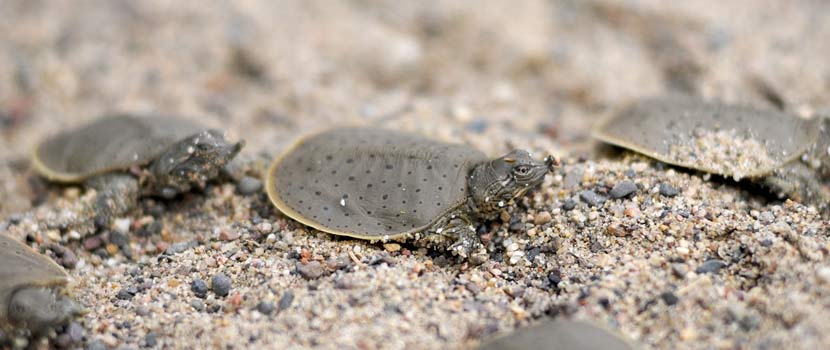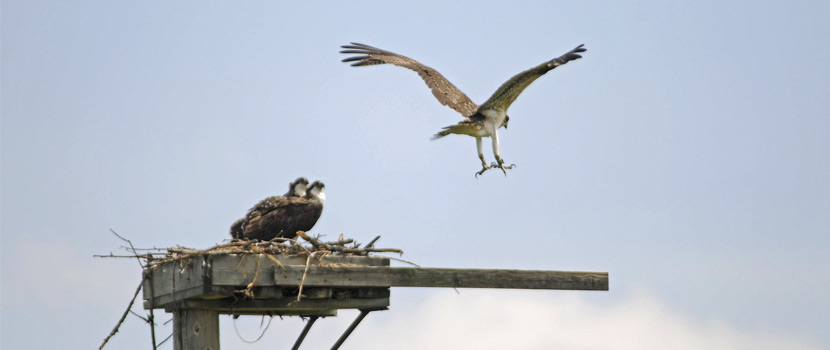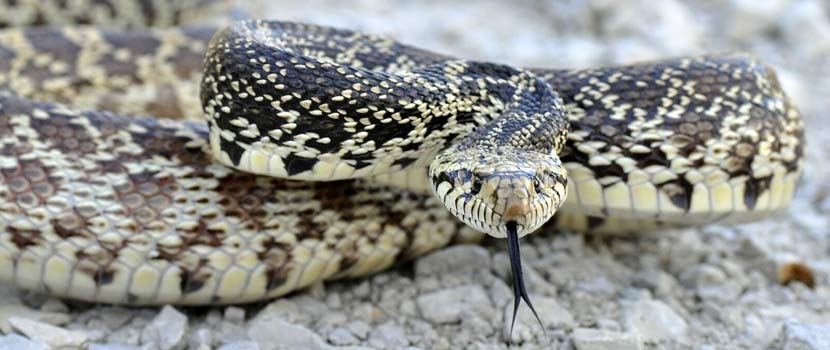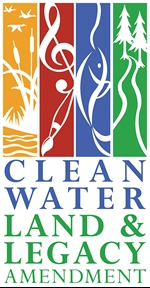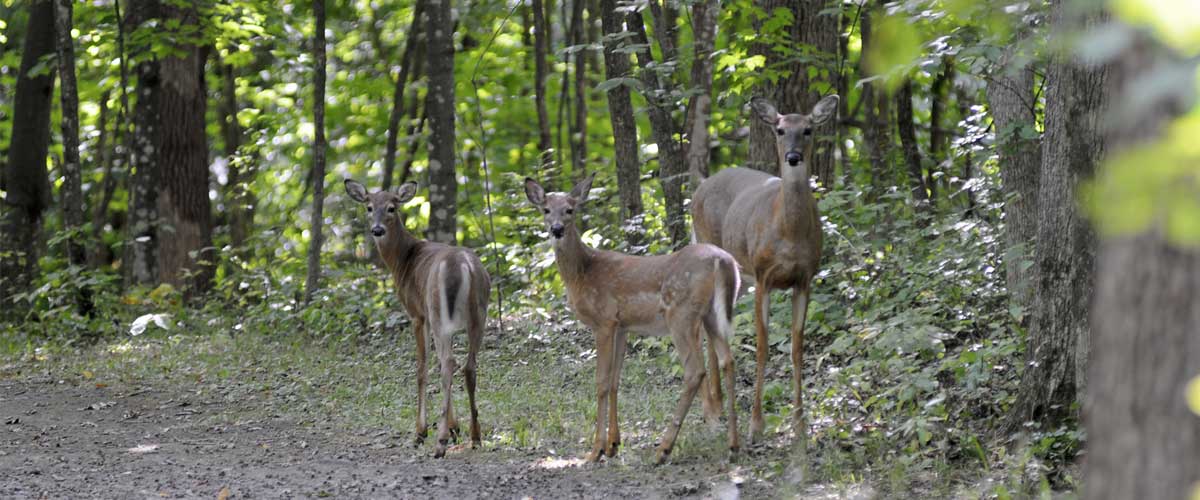
Why and How Three Rivers Manages Deer
By: John Moriarty
September 30, 2019
Category: Resource Management
Maintaining healthy deer populations is an important part of natural resource management.
Three Rivers developed its first plan for surveying and managing deer herds in 1978. Over the last 40 years, the deer herd has grown and expanded to the areas outside of the parks, and the need to manage the population has grown with it.
Managing deer populations is an ongoing, long-term effort to protect the habitats we’ve worked hard to establish and the wildlife that depend on these habitats. Read on to learn about why and how we manage deer.
Why We Manage Deer
We manage deer to reduce the damage they cause to our forests. Over several years, heavily browsed trees will die. In addition, when there are too many deer, they eat the tops and sides of young trees and shrubs. This browsing prevents normal plant growth, and seedling trees won’t grow past a small sprout.
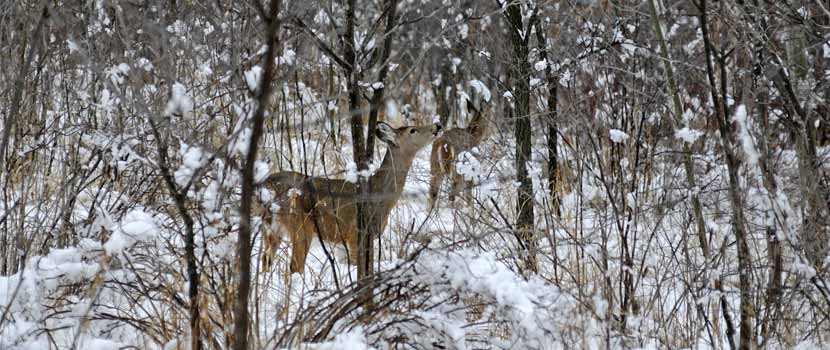
This adds to the cost of forestry management. New tree plantings need to be fenced to keep deer from browsing them; fences can cost more than $10,000.
Neighboring private properties can also be affected by large populations of deer, which can damage or destroy gardens, landscaping and orchards. Too many deer pose a safety issue, too. The more deer, the more deer-car collisions.
More than 20-25 deer per square mile (or 80-100 in a park the size of Baker Park Reserve) are too many. In areas where deer are not managed, populations can grow to more than 100 deer per square mile.
How We Manage Deer
We use many strategies to manage deer populations in the parks. These include:
1. Conducting aerial deer surveys (from a helicopter) in the winter to assess deer populations.
2. Holding controlled archery and shotgun hunts in the fall.
3. Working with neighboring municipalities to coordinate deer management programs.
4. Conducting sharpshooting programs in parks where hunting is not allowed or is not enough to control the deer population.
How Deer Hunts Work in Three Rivers
Each fall, we hold archery and shotgun hunts in the parks. Archers are chosen using a lottery system through the Metro Bowhunters Resource Base. Shotgun hunters are chosen through the Minnesota Department of Natural Resources Special Hunt lottery.
Safety for hunters, park visitors and park neighbors is crucial to each hunt. All hunters are required to attend an orientation to go over rules. Archers also pre-select their stand sites at orientation.
During shotgun hunts, the entire park is closed to the public to maximize safety. While we used to close parks completely for archery hunts, we now leave them open with appropriate signage alerting guests to the hunt.
This change occurred after park users requested access to the parks during archery hunts. In recent years, we left a few trails open, and the results were extremely successful. Because of the thorough orientation process and fact that archers pre-select their stand sites, park visitors were able to safely use the parks with no negative interactions with hunters.
How Sharpshooting Helps Manage Deer
Deer hunts are not allowed in Bryant Lake Regional Park and Hyland Lake Park Reserve. Because of this, we have used sharpshooting to help control deer populations in these parks since the 1990s.
Sharpshooting takes place in the winter by trained Three Rivers staff. Sites are selected based on what is safest for the public. The areas are baited to attract deer, and any deer taken are processed and donated to local food shelves.
How You Can Help: Don’t Feed the Deer
One of the biggest ways you can help with deer management is to not feed deer. At Three Rivers, there are several reasons we discourage feeding:
1. Feeding attracts deer into the parks, which already have too many.
2. Feeding leads to large concentrations of deer, which can spread diseases like chronic wasting disease (CWD).
3. High concentrations of deer can also lead to increased browsing of native vegetation, which makes it difficult to establish new forests.
4. Feeding encourages deer to move around more, which increases deer-car crashes.
5. Feeding deer can make managing deer much more difficult because it keeps deer away from our bait sites.
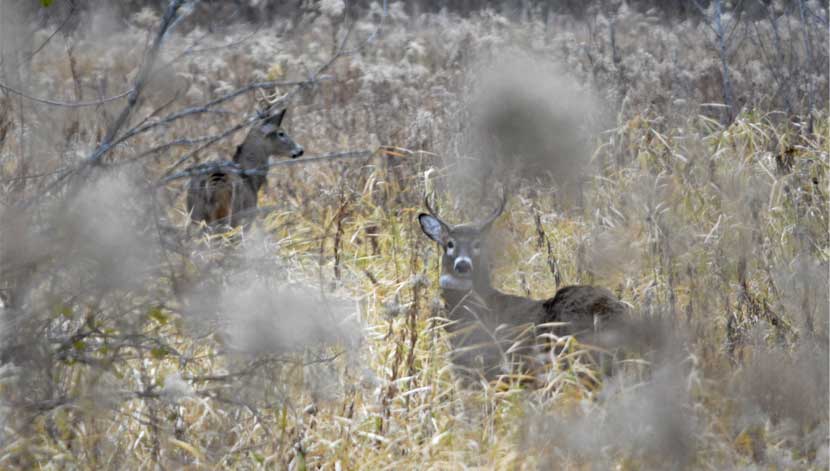
Deer can be fun to see in the parks, but too many of them can be detrimental to the environment and dangerous to drivers. Through careful management of deer populations, we can establish high-quality habitat for a variety of native wildlife and help limit the negative impacts too many deer can have beyond our park borders.
Learn More on The Wandering Naturalist Podcast
Interested in learning more about deer management? Hear from our wildlife supervisor, nursery supervisor, outdoor education supervisor and others on The Wandering Naturalist podcast.
About the Author
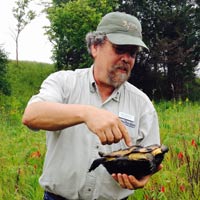
John Moriarty is the Senior Manager of Wildlife at Three Rivers Park District and has been with the Park District for 15 years. He has been involved in many of the wildlife restoration efforts and initiated the snake and butterfly efforts. John has led several projects to increase prairie habitat in the Park District. John likes exploring natural areas and looking for all types of plants and animals, but especially turtles.
Related Blog Posts
9 Things We Learned from the Medicine Lake Urban Turtle Project
By: John Moriarty
Where do spiny softshell turtles go after nesting on the beach at French Regional Park? How far do softshell, painted and snapping turtles travel in the water? Are they active in winter or affected by water quality? Find out what we learned during the Medicine Lake urban turtle project.
Osprey Reintroduction: The Great Success Story
By: Steven Hogg
Ospreys used to be very common in southern Minnesota, but they disappeared from the Twin Cities after World World II. Learn about the program to bring these amazing birds back and how wildlife can survive in an urban area when given the right tools for success.
All About Bullsnakes — And How They Found A Home in Three Rivers
By: John Moriarty
Did you know that the longest snake in Minnesota can be found in Three Rivers Park District? Bullsnake populations have declined in the Twin Cities due to habitat loss, but thanks to reintroduction efforts, they have found a home in Crow-Hassan Park Reserve.
